

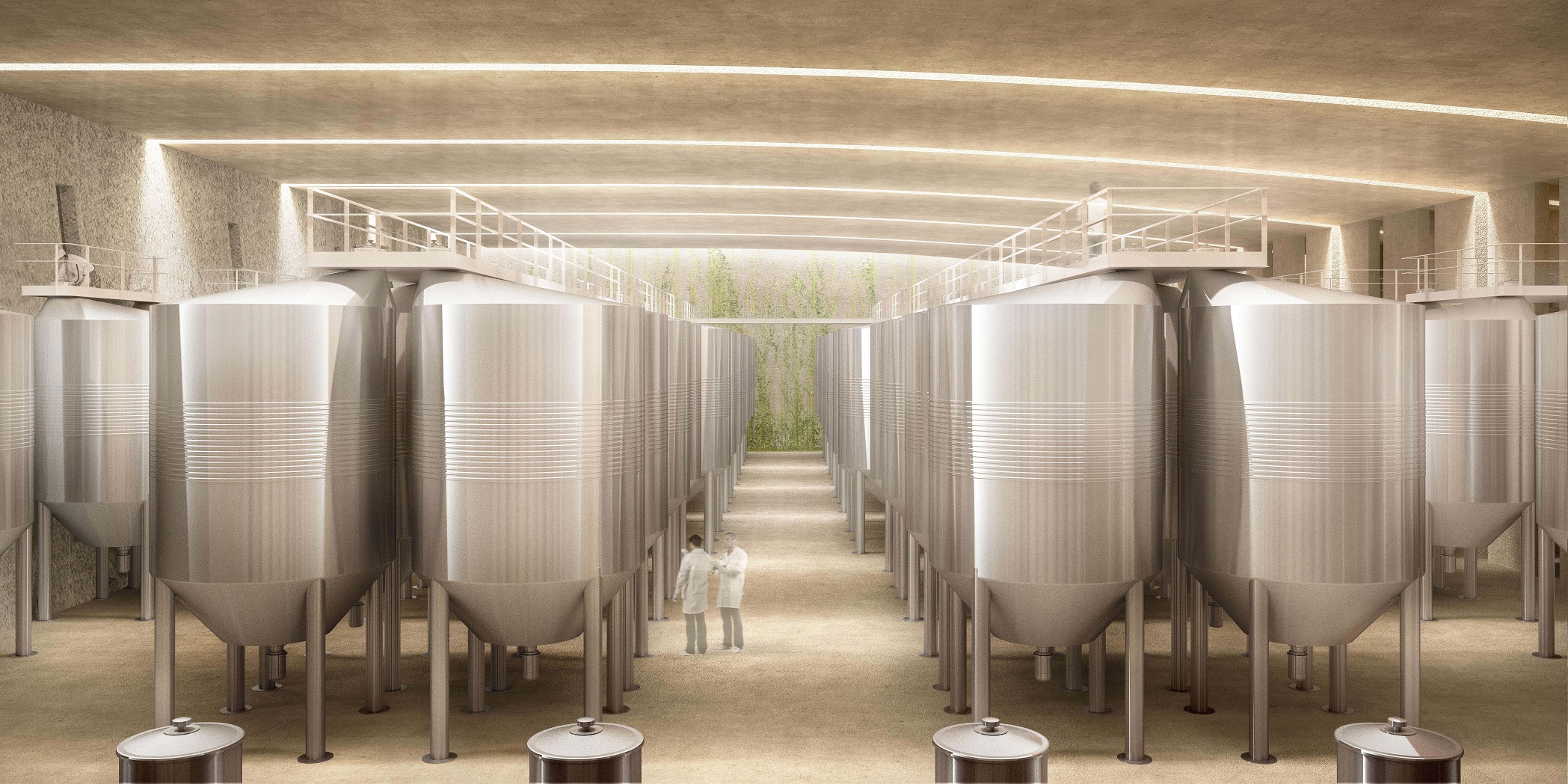
One of the impressive things about the 18,200 m² structure is that there are very few pillars to obstruct productivity. The winery – mostly on one level – will have the capacity to handle 2,700,000kg of grapes every harvest and to produce about 1.9 million litres of wine (2.24 million bottles) every year.
'It puts Perelada at the forefront of architecture and sustainability'Javier Suqué, president of the family-owned Perelada Vins i Caves, says the winery “represents a huge leap forward in the search for excellence in wine” and puts Perelada “at the forefront of architecture and sustainability”.
The new facility is located next to the group’s palatial La Granja building, designed in 1941 by Adolf Florensa – one of the main driving forces behind the reform of Barcelona’s charming Gothic Quarter (Barri Gotic).
“From the outset we were clear that we wanted to reinforce the character of the place and not conflict with the existing buildings,” Rafael Aranda, one of the architects, says. “We created a new landscape, a moving terrain on the current grounds which, through its construction in strips, will be understood as a building linked to its topography, fully integrated and quite different from the conventional idea of a building.
“Using La Granja’s own concept as a lookout over the landscape as a departure point, the building will take advantage of the uneven terrain, reaching the wall that marks the platform of the main house and extending to the limits defined by the roads, turning into a slope that connects the site’s two levels. This is how we will create spaces with the area and volume we need along with a carefully designed exterior look that respects the landscape.”
The winery will produce white, rosé, red and experimental wines. The experimental wines will have their own area.
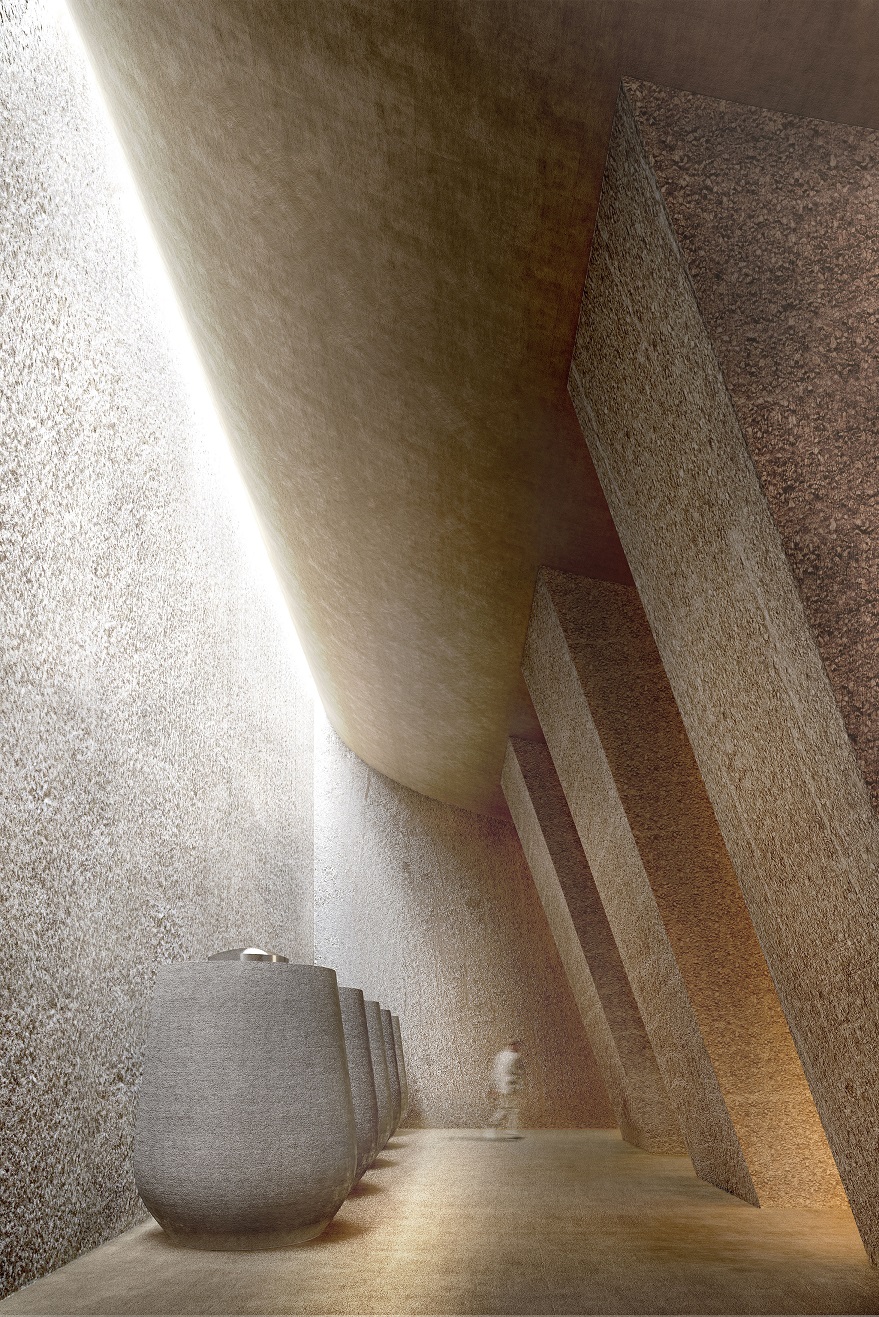
Once the building is erected, it will be covered in soil – creating a new slope from La Granja. Only the entrance and the opposite end with the large windows will be visible. The windows also provide natural light for the entire winery.
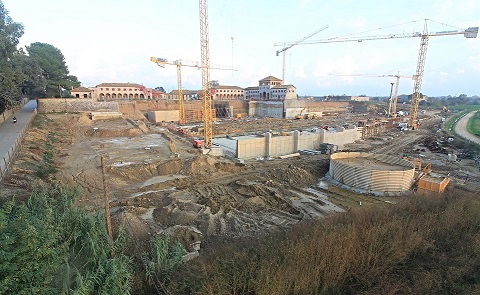
The decision to build a new winery at the historic castillo says a great deal about the third-generation of the Suqué-Mateu family: their desire to make great quality wines; their belief in experimentation and innovation; and their commitment to Catalonia’s Empordà region.
The castle is one of the most emblematic landmarks in the Iberian Peninsula’s oldest wine region. Its two towers, reflected in the nearby lake, have become the symbol of Perelada’s wines and cavas (which are made in Penedès). Miguel Mateu bought the 14th-century estate in 1923 and revitalised Empordà’s traditional wine-growing industry by opening the Perelada Vins i Caves winery on the same spot where Carmelite monks had made wine in the Middle Ages.
Suqué says the new winery will also boost tourism in the Catalonian town. “This ambitious project will contribute to the expansion of Perelada’s historical, artistic and scenic heritage, turning it into a prestigious destination as well as enhance the excellence of Empordà’s wine tourism, attracting wine lovers as well as tourists who may not be interested in wine but do have a sensitivity to architecture, design, history, culture, science,” he said in a statement.
The estate already offers tastings, tours, a five-star hotel with golf course (Hotel Golf Peralada), two restaurants, a wine bar, garden bar, and wine spa. The refurbished La Granja will be used for wine tourism, conferences, meetings, and training.
Winemaker Delfí Sanahuja also believes the new winery is an important addition to the region and will help to raise the profile of the DO. “It will contribute to the international expansion and recognition of the DO Empordà, still an up-and-coming DO with massive potential,” he says.
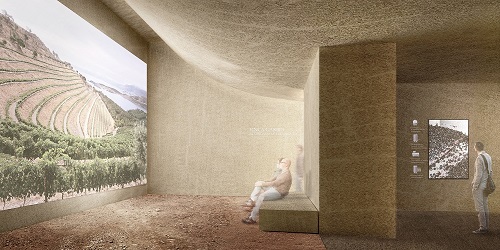
How sustainable is this new winery?
- The winery’s foundations will be used for geothermal energy: the foundation piles will serve as heat exchangers to reduce the energy consumption from heating, cooling and hot water.
- A rainwater reservoir and a drainage network will direct water into the vineyard’s subsoil.
- Shade will be provided by native plant species that don’t require watering.
- The new winery will meet environmental and energy standards set by the US Green Building Council. Its LEED (Leadership in Energy & Environmental Design) sustainable building certification system encourages energy efficiency, the use of alternative energy, the improvement of indoor environmental quality, efficient water consumption, the sustainable development of outdoor spaces and the selection of sustainable materials.


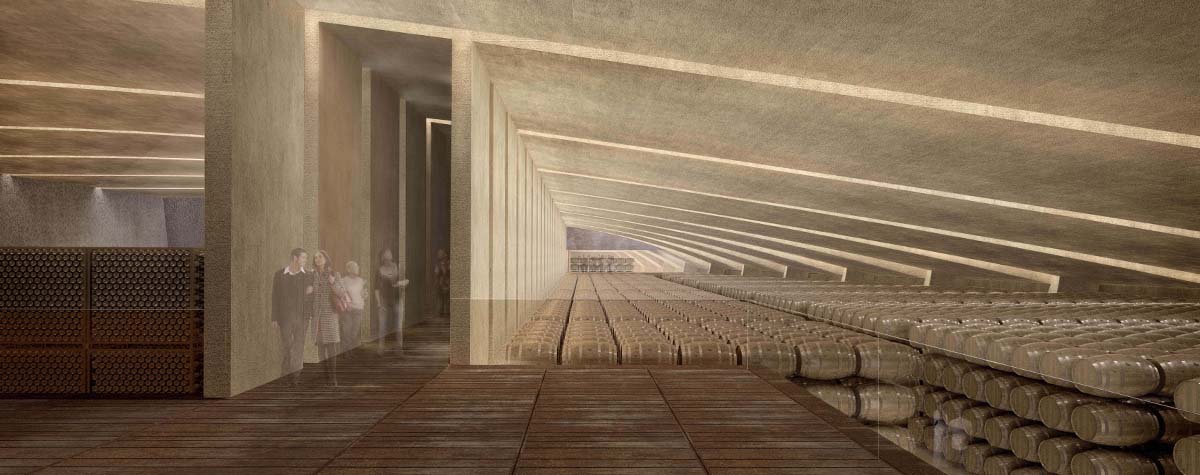










.png)






